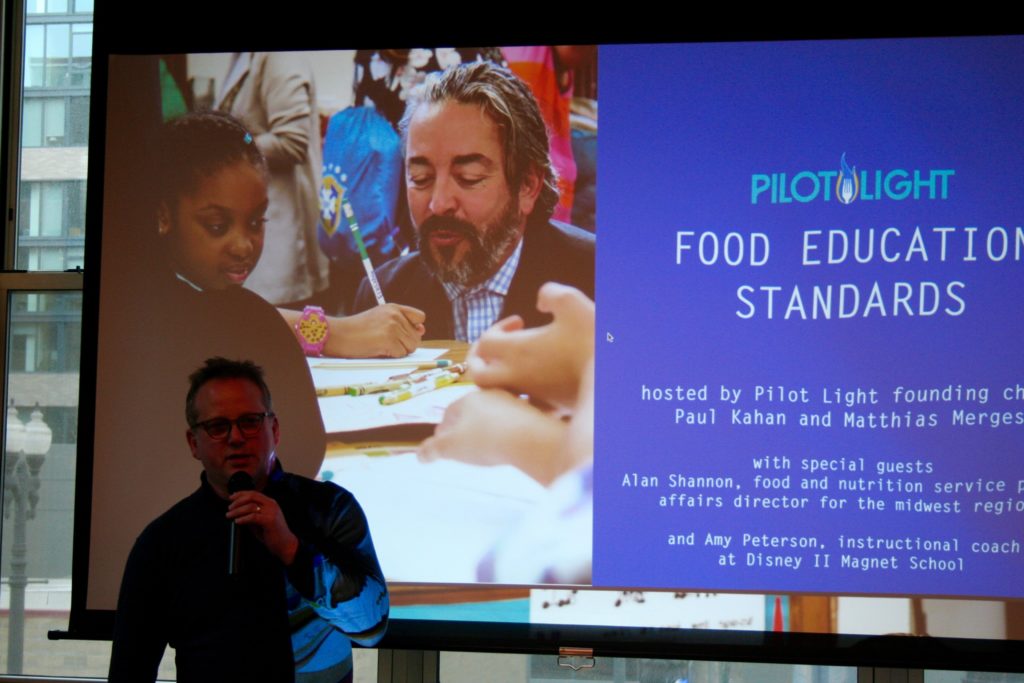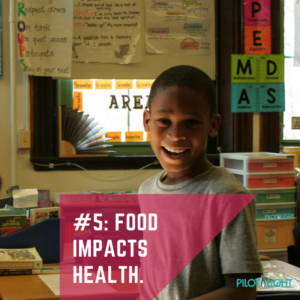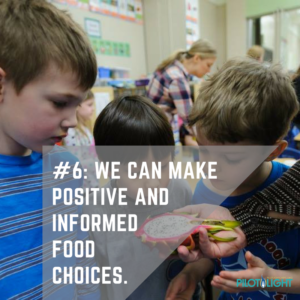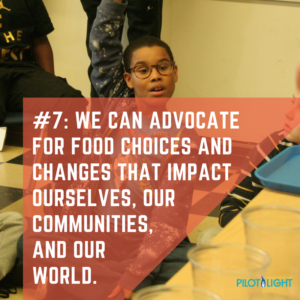by Hannah Hemperly
The Pilot Light Food Education Standards, a multi-year undertaking, were officially released Monday night at avec in Chicago, IL with Pilot Light co-founding chefs Paul Kahan and Matthias Merges leading a lively discussion on the impact of the new Food Education Standards.
“Food education is the vehicle that can change our world for the positive,” Kahan, spoke as he introduced the Food Education Standards. 
Started in 2015, the seven Food Education Standards were refined and further developed through the Pilot Light Food Education Summit in October of 2017, where more than 25 participants from across the country, including chefs, Chicago Public School (CPS) teachers and staff, USDA employees and food education experts brought their knowledge to contribute to developing the first-ever standards for food education for students grades K-12.
The Food Education Standards provide a holistic approach to food education through classroom curriculum; the Standards focus on where food comes from, how food is grown, how food impacts our bodies, and how food connects us with our communities.
“This is such an important milestone for Pilot Light and all who contributed,” said Alexandra DeSorbo-Quinn, executive director of Pilot Light. “I have all the good feels to be here right now!”
DeSorbo-Quinn led a panel discussion with contributors to the Food Education Standards including Matthias Merges, chef and restaurateur, Alan Shannon, food and nutrition service public affairs director and Amy Peterson, instructional coach at Disney II Magnet School in Chicago, IL.
The panel focused on the learning and empathy that stem from food education because of food’s ability to define and create commonalities. As someone who has had first-hand experience integrating the Pilot Light curriculum into her classroom, Peterson said she loves how food can allow teachers to be creative in their lesson plans.
“The standards allow a teacher to be creative and draw on the uniqueness and commonality we have,” Peterson said. “Applying math to a cooking recipe makes math fun, both for teachers and students!”
“Education leads to change,” added Shannon. “Kids learn they have a voice in the economy. They have the buying power to lead change.”
Merges, a father of three girls, highlighted the importance of Food Education Standard number one Food connects us to each other and expressed how he connects to it on a personal level adding,”I want my kids to be able to reach across a table, share and express with others, and food helps us do that,” he said.
Kathy Argentar, development manager for Pilot light, spoke to the common language provided by the new Food Education Standards, noting that the Food Education Standards can allow students to be not only food-“lingual” but food-literate. “You don’t just speak the language, you live the life,” Argentar said. “It’s not just nutrition education, it’s food education.”
Mark your calendar, on March 24, Justin Behlke, culinary director for Pilot Light, will join a panel at the Good Foods Festival, hosted by Family Farmed, to discuss the new Food Education Standards. In the coming weeks, Pilot Light will be releasing grade-specific lesson plans for each of the Food Education Standards, teaching guides and more to help drive awareness and implementation of the Food Education Standards.
The Food Education Standards are as follows:
Food connects us to each other.
Foods have sources and origins.
Food and the environment are interconnected.
Food behaviors are influenced by external and internal factors.
Food impacts health.
We can make positive and informed food choices.
We can advocate for food choices and changes that impact ourselves, our communities, and our world.











